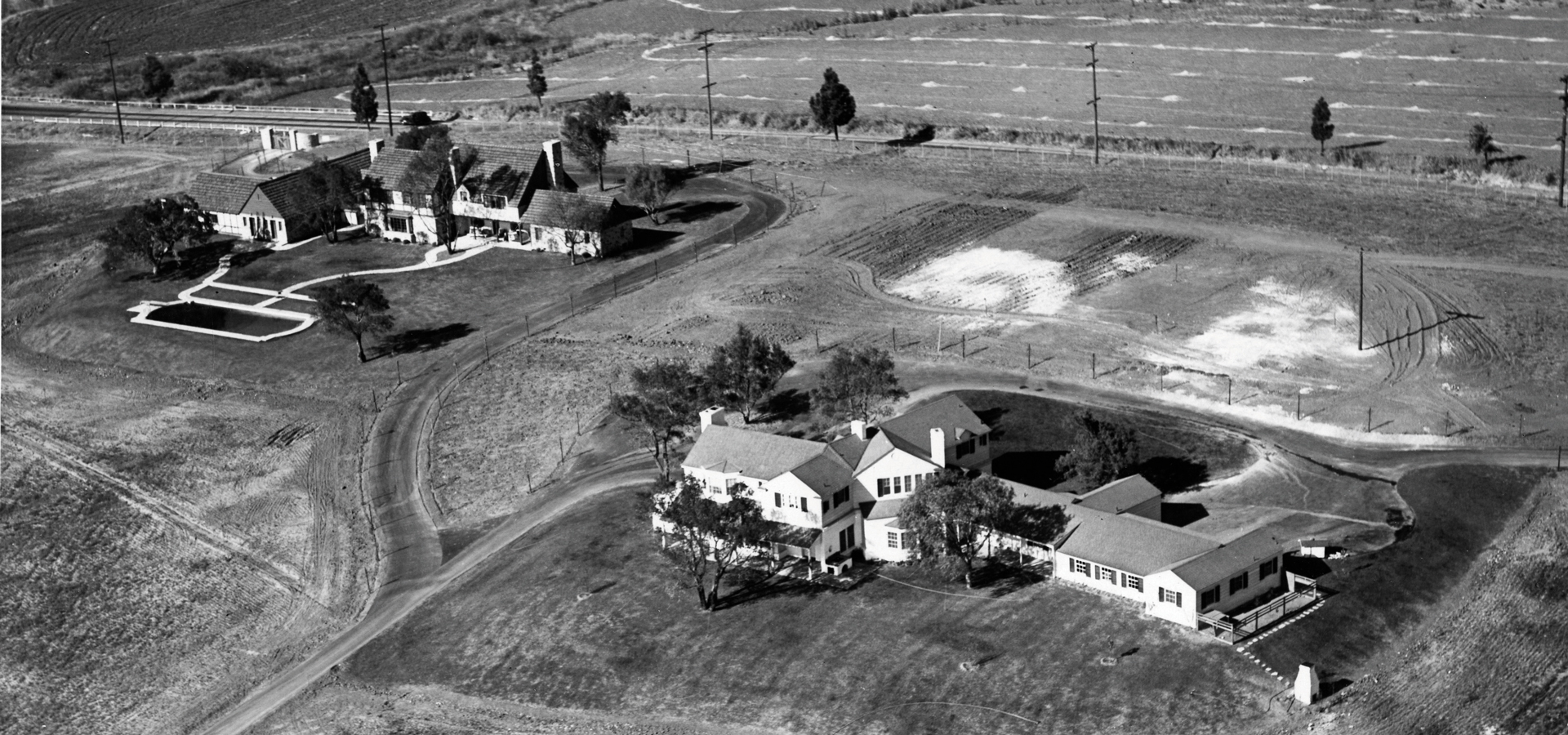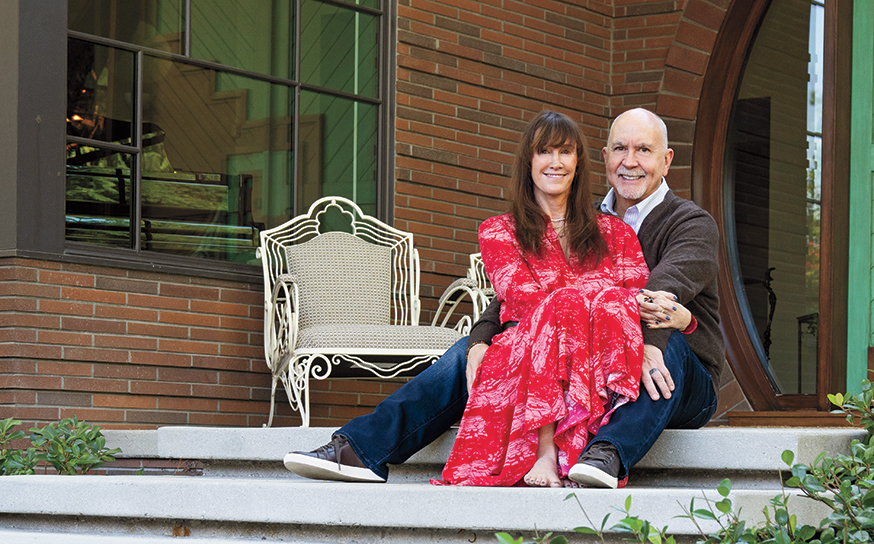Delve into the story of the historic Oakridge estate in Northridge, built by architect Paul S. Williams for actress Barbara Stanwyck.
80 years—and still standing.
Driving to the Oakridge Estate in Northridge is like stumbling upon a movie set that time forgot. One minute you’re on busy Devonshire Street, jam-packed with strip malls and fast food restaurants. The next minute you’re passing through the crumbling flagstone gate, amid complete silence, save for the pepper trees rustling in the wind. Before you know it, you’re facing the Oakridge mansion, designed in 1937 by famous California architects Paul Williams and Robert Finkelhor, for the legendary movie star Barbara Stanwyck. On this summer day, the sprawling home seems to bake and crackle in the Valley heat.
Pictured Above: The 130-acre Marwyck Ranch property, showing Stanwyck’s house and pool on the left.
Zeppo and Marion Marx’s home is on the right.
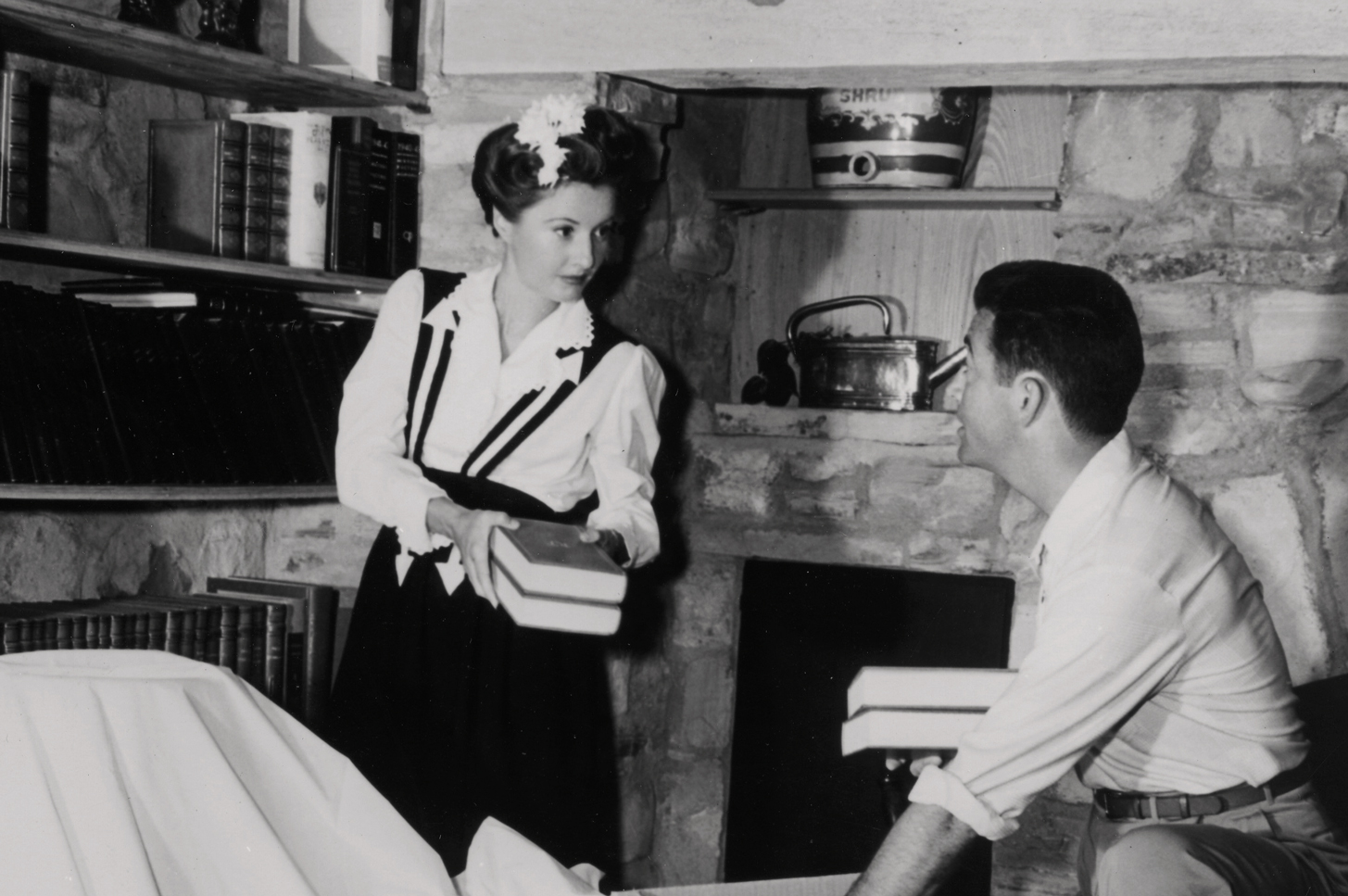
HOME ON THE RANGE
Barbara Stanwyck and Robert Taylor inside their their 6,000-square-foot home designed by Paul R. Williams
THE VISION
Stanwyck, who was of Irish descent, originally asked for an Irish farmhouse for her hilltop Northridge home. What she got was a rustically elegant, Tudor-English Revival for which she paid $30,000. Although it wasn’t exactly what she had in mind, the actress ended up loving the home—her “peaceful and quiet” retreat from the fast life in Hollywood. While the two-story, five-bedroom house is still standing, little is left that hints of its glamorous heyday. The interiors, which are unfurnished, give the structure an almost ghostly vibe. And the grounds feel parched. The 50-foot swimming pool is empty. Down an overgrown path, there is a crumbling tennis court, a gift to Stanwyck from the man she would marry in 1939, Robert Taylor. (The two divorced in 1952.)
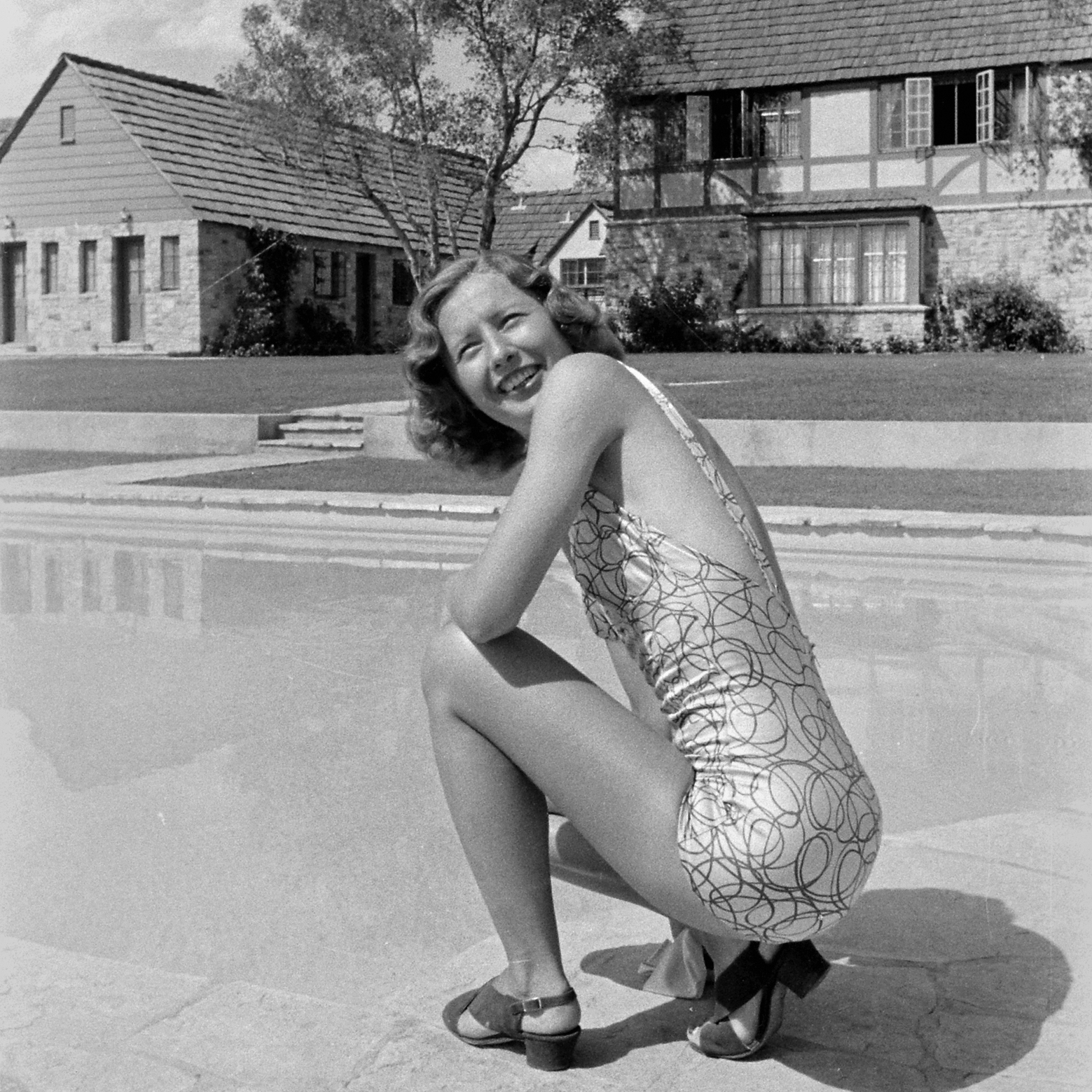
THE DESIGN
The hallmark features of a Williams house—open floor plans and floor-to-ceiling windows (which offer epic views of the San Fernando Valley)—are still intact. Visitors can also still see the luxurious materials used in the home. There are original cork floors in the kitchen, redwood paneling and a large marble tub—apparently a luxury the actress had wanted since she was a little girl, growing up as an orphan. The only telltale sign that a movie star once lived here is the grand closet and dressing room off the master bedroom, which is flooded with natural light. Striped, elegantly draped but faded cloth hangs like a circus tent from the ceiling. Back in the day, one can imagine the drama of walking into Stanwyck’s closet, busting from the gills with designer dresses and accessories.
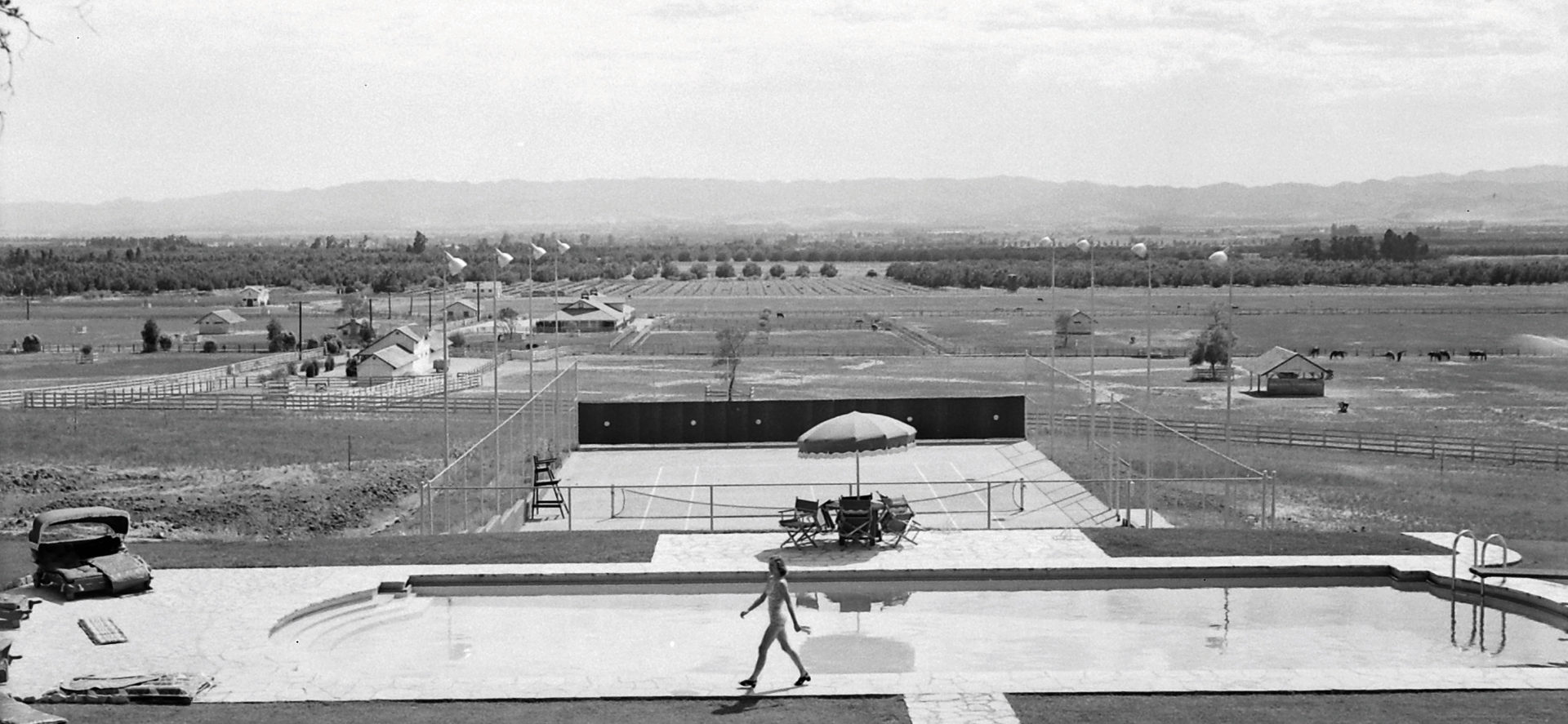
THE EQUINE CONNECTION
The Oakridge Estate was originally named “Marwyck” and was conceived of as an expansive thoroughbred horse breeding and training ranch, by Stanwyck and Marion Marx. Marx’s husband, Zeppo, who left acting with his famous brothers to become an agent, represented Stanwyck. The three were best friends and together, with Kentucky horse trainer Harry S. Hart, they bought 130 acres of barren ranchland in the northwest Valley for their new venture. With the opening of the new Del Mar and Santa Anita tracks, Hollywood had gone horse-crazy, and the partners believed that Marwyck would be a highly successful business venture.
On Thanksgiving of 1936, the Marxes and Stanwyck—along with guests Robert Taylor (the two weren’t married yet), Clark Gable and Carole Lombard—had an all-star picnic on the hill where the two homes would soon sit side by side. The group spread out on a blanket, looking over the picturesque, undeveloped Valley. “It was the first time I ever ate dinner lying on my stomach,” Stanwyck said. “But it turns out to be the ideal way to cope with barbequed steak.”
Stanwyck and the Marxes each built homes overlooking Marwyck’s stables, barns and cutting-edge training track. The peaceful seclusion was cathartic for Stanwyck, who was in the midst of a brutal custody battle with her ex-husband Frank Fay over their son. It was the first house she ever owned, a perfect 30 miles from the Hollywood movie studios where she worked. She was often in awe, wondering, “How did I ever get out here with all this grass? About the only grass I ever got close to before was on the backdrop of a show.” Lounging by her pool with her son, Dion, Stanwyck would look back on her hardscrabble childhood as an orphan in Brooklyn and think how “wonderful [it was] that we own this. When I was a child if I’d had a pool like this, I’d have thought I’d died and gone to heaven.”
By the late ‘30s, Marwyck’s horse operation was in full swing, boarding and training horses from all over the country. A 1937 Los Angeles Times article called Marwyck “one of the most pretentious breeding projects ever undertaken in California,” which would help the state “take a front row with Kentucky and Virginia as a producer of not only champions but honest, sturdy racers of real worth.”
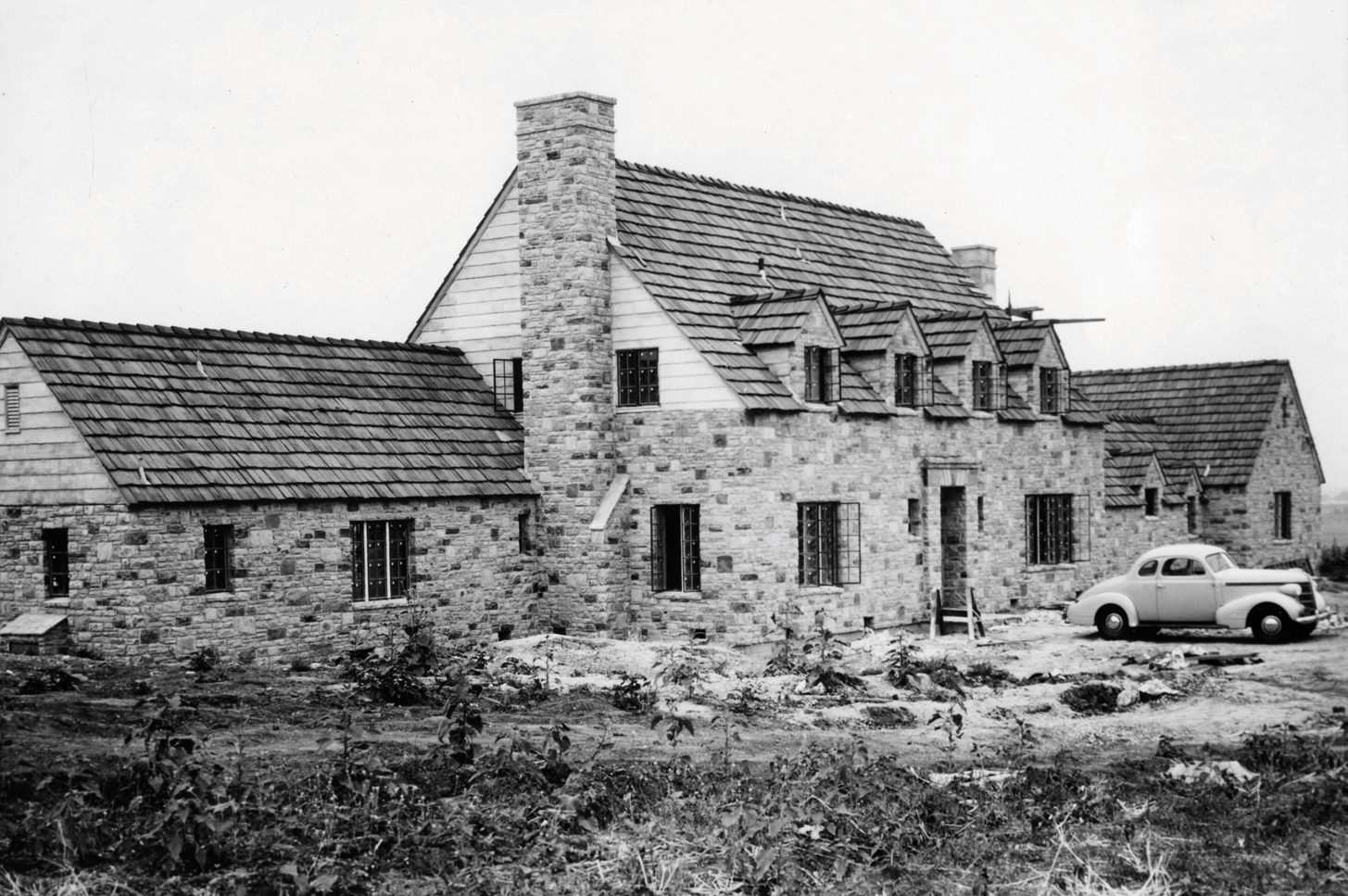
Stanwyck’s Tudor-English Revival style house in the 30s...
THE NEXT CHAPTER
But Marwyck’s glory days were short-lived. Stanwyck soon tired of the long commute and isolated life at the ranch. She and Taylor moved to Beverly Hills, and in 1941 the house (on roughly 10 acres) was bought by folksy movie actor Jack Oakie and his wife, Venita. The couple renamed the property Oakridge. The Marx home was sold to movie star Janet Gaynor and her husband, the fashion designer Adrian.
In 1943 the land that comprised the Marwyck horse ranch was bought by the wealthy couple John and Annette Ryan and renamed Northridge Farms. Together with a partner, the Ryans expanded the facility, raising and training successful champions including War Knight, the first California-bred foal to win a $100,000 prize.
The Ryans moved into the Gaynor home in the early ‘50s and continued to work with horses over the next decade. After John Ryan’s death, Northridge Farms closed. The land was sold to developers, and the Marx house was destroyed.
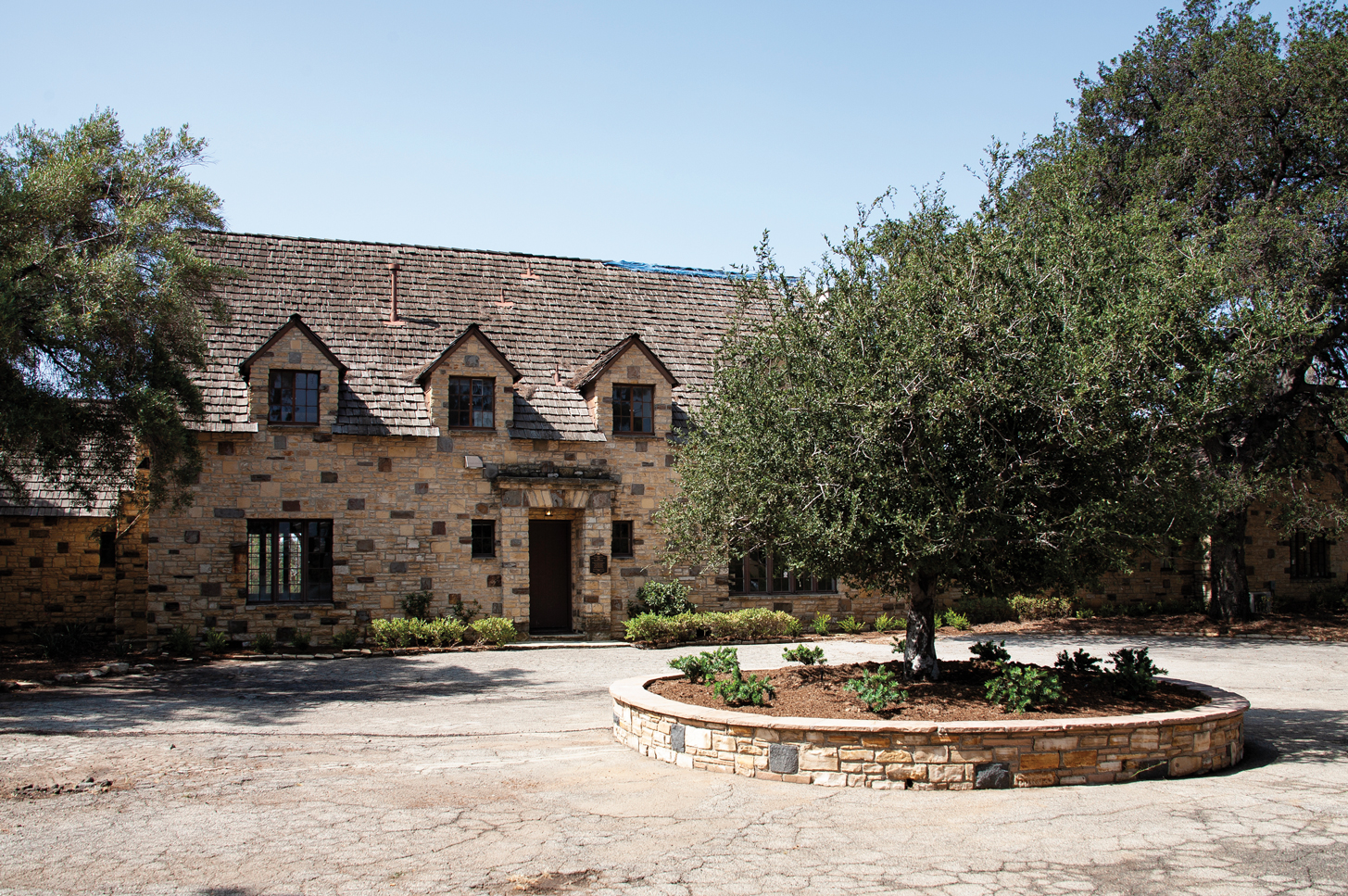
...and as it looks today.
THE OAKIE REIGN
In 1948 Venita Oakie was killed in a plane crash, and two years later Jack married Victoria Horne. The couple, who was childless, remained at Oakridge for nearly four decades.
In the living room, visitors can still see a painted mural of pastoral English scenes and a custom-built bar put in by the Oakies, who loved to entertain. We’re told the floor around the bar is well-worn due to frequent use. Out back is a recreation room where Jack would host famous friends like Clark Gable for all-night card games and movie screenings. On one side of the house are the remnants of a grove of trees, which he and his friend boxer Jack Dempsey would often water.
In 1978 Jack died, and the reclusive Victoria remained in the house, changing nothing and writing books about her life with Jack, including Jack Oakie’s Oakridge. She lived there until 2000, when she donated Oakridge to the USC School of Cinematic Arts.
THE PRESERVATION EFFORT
The Northridge Department of Recreation and Parks bought Oakridge and the surrounding 9.47 acres in 2010 for $3.35 million, saving the land from developers. Today it is looked after by the nonprofit Friends of Oakridge, who provide monthly public tours. However it is in desperate need of restoration so it can be the cultural and educational center that the organization envisions. It needs a tough, clever heroine—much like the roles Barbara Stanwyck loved to play.
Ninety-minute, docent-led house tours are offered on scheduled dates throughout the year. To arrange a visit or donate for restoration, visit theoakridgeestate.org
Join the Valley Community






